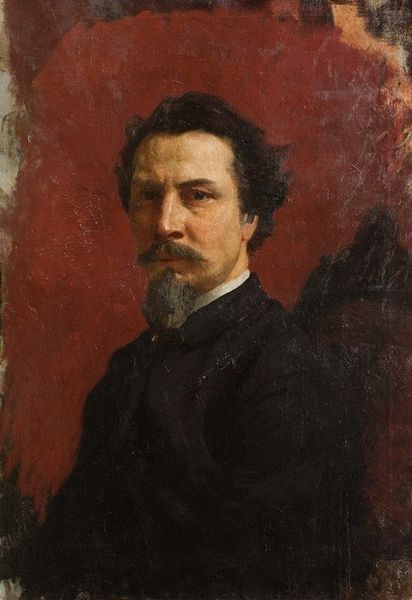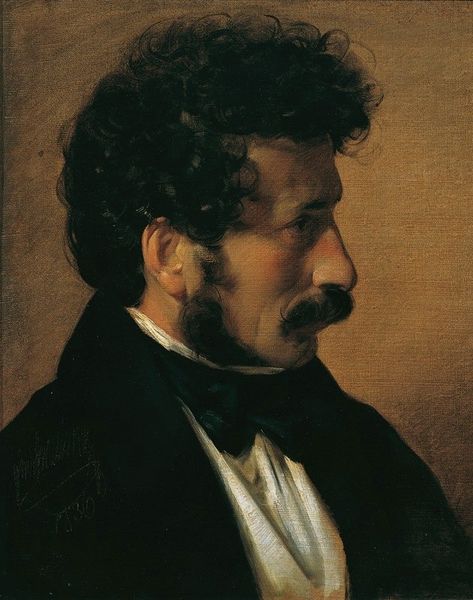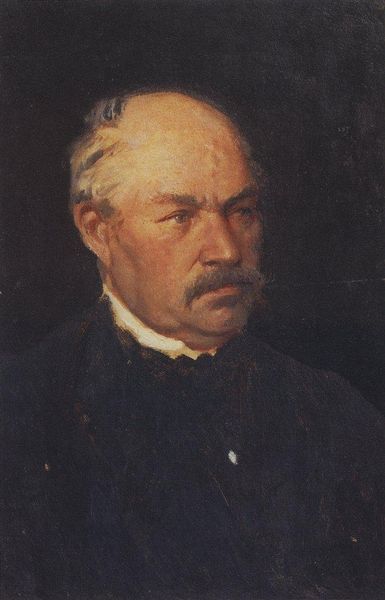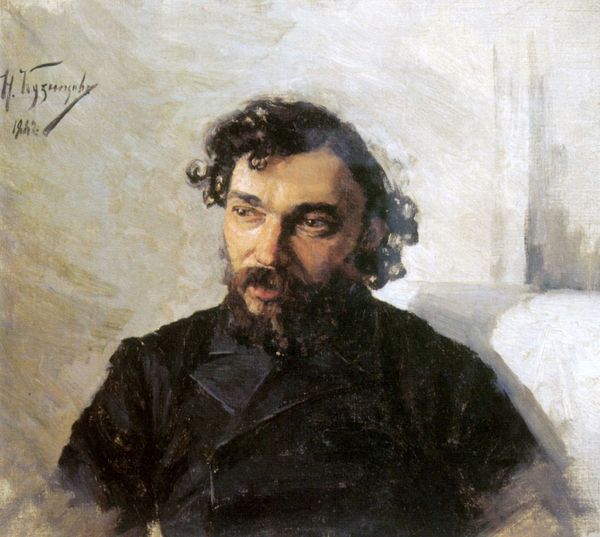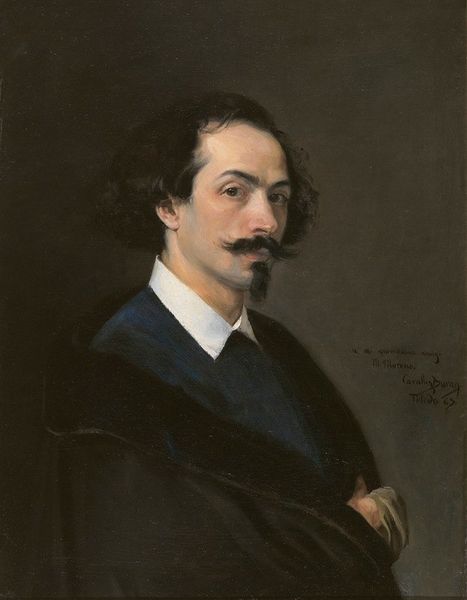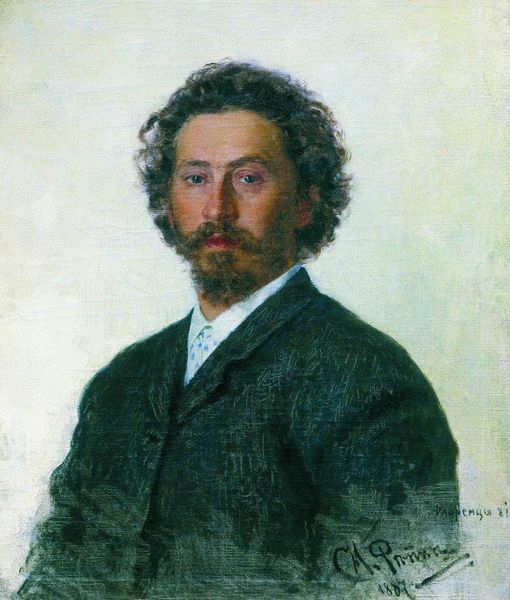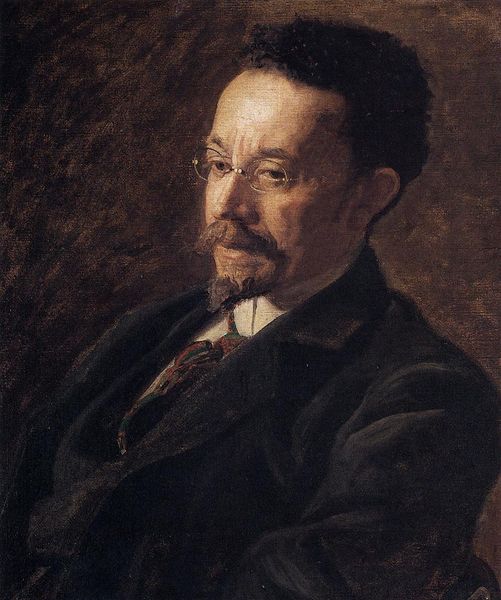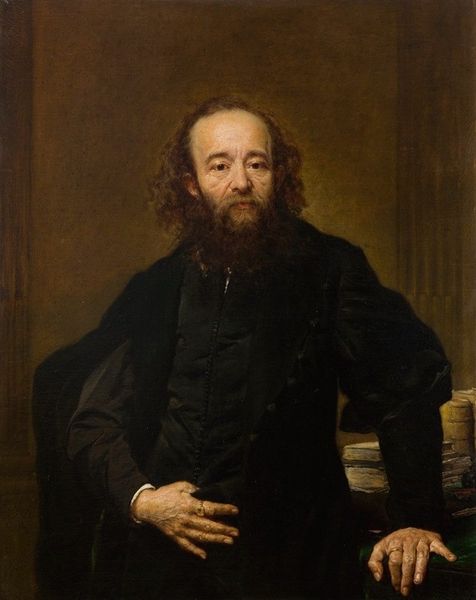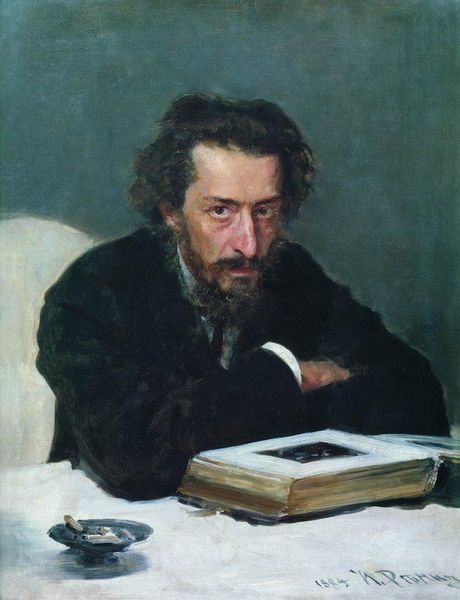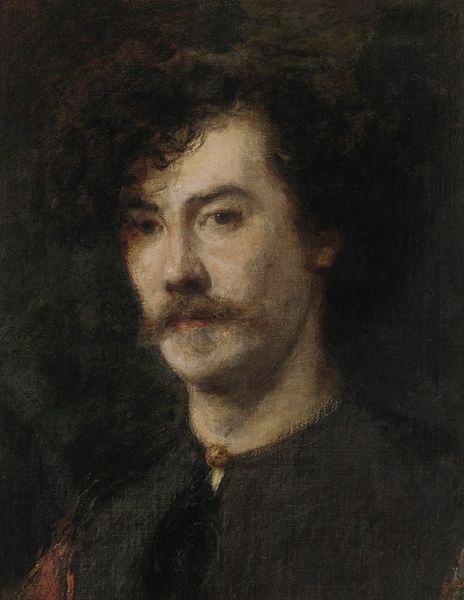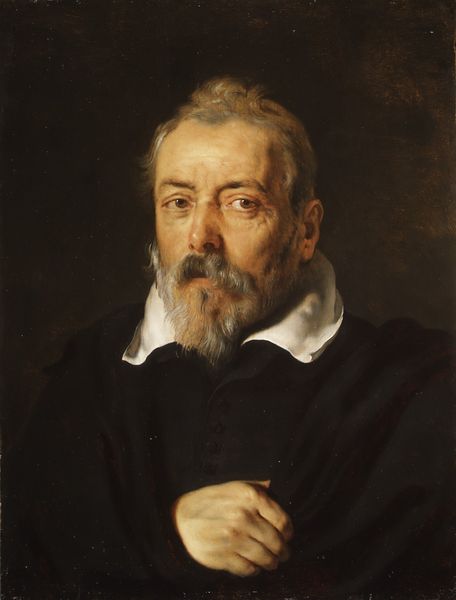
Copyright: Public Domain: Artvee
Jan Matejko painted this portrait of Henryk Anastazy Groppler, a Polish professor of medicine, sometime in the late 19th century. Its formal qualities – the dark palette, the sitter’s direct gaze, the traditional composition – situate it within the conventions of academic portraiture. But by understanding this painting in its cultural context, we can get a richer sense of its meaning. Matejko was a leading figure in the Polish artistic movement, which aimed to promote national identity through history painting and portraiture. Poland was partitioned at the time, controlled by Russia, Prussia, and Austria. Art became a powerful tool for preserving Polish culture and collective memory. The very act of painting a portrait of a Polish intellectual, like Groppler, contributed to this cultural project. Historians use period documents, letters, and exhibition reviews to understand these complex relationships between art, identity, and politics. The meaning of art is always tied to its social and institutional context.
Comments
No comments
Be the first to comment and join the conversation on the ultimate creative platform.

